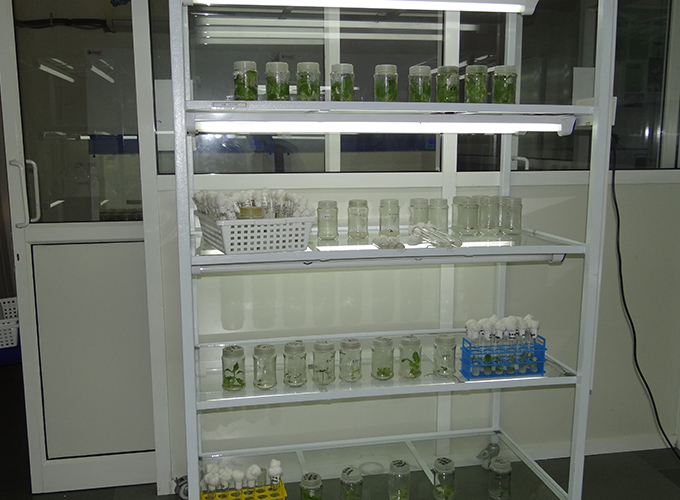Mission
- Create a multi-disciplinary research environment wherein biologists, physicist, chemists, computer scientists, mathematicians, statisticians, work as teams and adopt an integrated approach to find solutions to complex biological challenges
- Impart world class higher education and research in relevant applied areas (Computational Biology & Regenerative Medicine)
- Develop research partnerships with leading Institutes at the National & International level
- Disseminate the knowledge by presenting the work in renowned conferences and publish in high impactor factor journals
- Collaborate with Industry Scientists and Clinicians to promote clinical application of the research
ABOUT Centre for Computational Biology & Translational Research (CCBTR)
The Centre for Computational Biology & Translational Research (CCBTR), Amity University, Mumbai aims to provide a multi-disciplinary and systematic approach to finding solutions to challenges faced in translational science. As part of the Mission, the Institute will focus on areas wherein the research findings will have a direct relevance to transforming biological processes into real-world clinical impacts. Researchers from various streams, like Biology, Chemistry, Physics, Mathematics, Statistics, Computer Science, Chemical engineering will work together and adopt an integrated approach to tackle biological problems, with direct practical applications in health Sciences.
Research Areas

Genomic Data Science
In this age of “big data”, and with the advent of newer and relatively inexpensive technologies, like Next Generation Sequencing (NGS), the need of the hour is to tackle massive amounts of data to make sense of it all. Realizing that growth in data-driven biology requires developing appropriate computational and statistical tools for data analysis, we will bring together, researchers with experience in cell & molecular biology, genomics, bioinformatics, statistical computation and data analysis, programming, and machine learning, thus providing an interdisciplinary platform to find solutions towards improving human health and disease. The focus would be to apply statistical tools to data generated from high-throughput technologies (microarray/NGS); analysing results using programming languages (R/Python); Development of algorithms for data analysis & visualization. Thus, this would result in obtaining high-quality data driven research, for better understanding of a particular disease condition and in turn will help with better prediction of disease outcomes.
Integrated Omics
The advancement of high throughput technologies, like genomics, proteomics, metabolomics, has greatly increased the ease and reduced the costs of collecting multi-omics data. However, a major challenge lies in attempting to integrate the data sets from various omics platforms to create more meaningful biological and clinically relevant knowledge. Machine learning techniques and methodologies that can facilitate the cross talk of the multi-omics platforms would be employed to understand the complexity of heterogenous data sets. A systems biology approach would be undertaken to study the complex interplay of a host of genes/proteins/metabolites, to provide a more comprehensive view on human diseases, which would help in biomarker discovery.
Structure-based drug design
Drug discovery and development is an expensive process and is time-consuming. Computer-aided drug designing tools can help shorten the timeline, thus substantially reducing the R & D costs. Various software will be used for identification and design of small molecules as inhibitors /probes against various drug targets of therapeutic importance. Further, using computer-assisted analysis In silico designing (epitope mapping) for development of vaccine/diagnostic markers for infectious diseases will be undertaken.
Biomaterials & Tissue Engineering
Stem Cells have emerged as an attractive alternative source of cells for cell therapy due to its inherent property of multiplication and differentiation into a variety of cell types upon giving proper cues and stimulation with suitable growth factors. Although a lot of research has been able to report efficient differentiation, there has been some concerns regarding the generation of mature cell types and also the low percentage of differentiation efficiency when using a two-dimensional (only culture dishes) approach. Thus, successful generation of mature cell types would depend on a combination of cells, growth factors and a suitable 3-D environment to maintain functionality. Various scaffolds/biomaterials will be synthesised and tested for its potential to support differentiation. The research will include optimization of protocols for stem cell differentiation using organoid cultures/ artificial niches to mimic stem cell differentiation, with particular focus on liver diseases.
Patient-derived Induced pluripotent stem cells (iPSCs) research
Stem Cell research is a rapidly evolving area, despite being fraught with innumerable challenges and hurdles that have yet to be overcome to realize its ultimate potential and clinical application. The path breaking discovery of induced pluripotent stem cells (iPSCs) in 2006, has revolutionised the field of stem cell research and translational science and has brought in a lot of excitement and optimism in this area. We will be looking at developing model systems for studying human development/disease using normal/patient derived iPSCs. Further, the Centre will also focus on the application of genome editing through CRISPR/Cas9 system in patient derived iPSCs. This research will open up newer avenues for studying human diseases and development.
Stem cell tracking and Imaging
Despite the clinical data appearing promising, there are severe limitations to realizing the potential of stem cell-based therapies. One major obstacle has been monitoring the bio-distribution and homing of implanted or injected stem cells in the human body. Hence, an urgent need exists to develop non-invasive and sensitive imaging techniques, which will prove valuable for optimisation of therapeutic delivery for cell therapy. We would focus on synthesising novel biocompatible nanomaterials for molecular imaging and tracking of stem cells. Earlier work carried out in the lab has shown the potential of nanomaterials to be promising agents for tracking/imaging. We would also look at in vivo tracking systems for visualising the nanoparticles. Various animal models for the disease/disorder of interest would be created to study the in vivo tracking of stem cells.